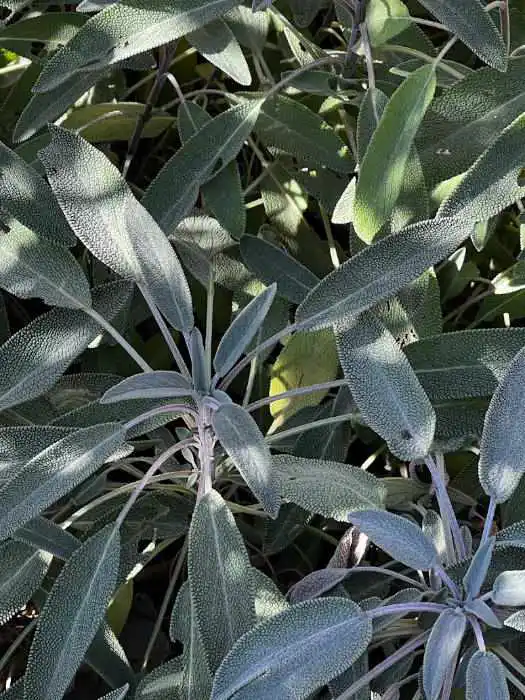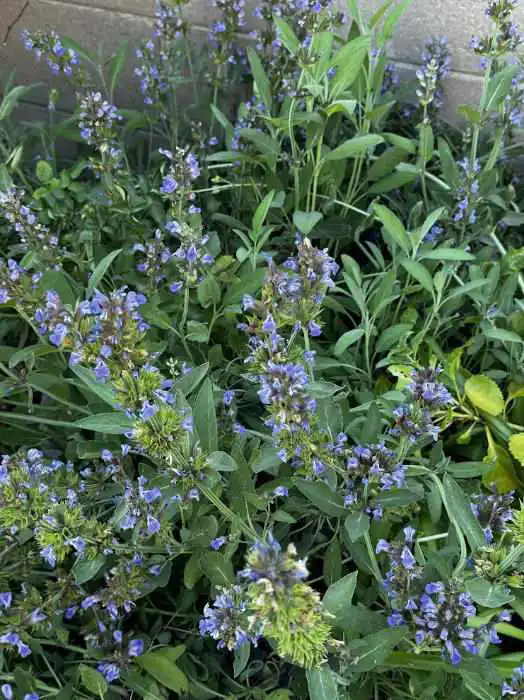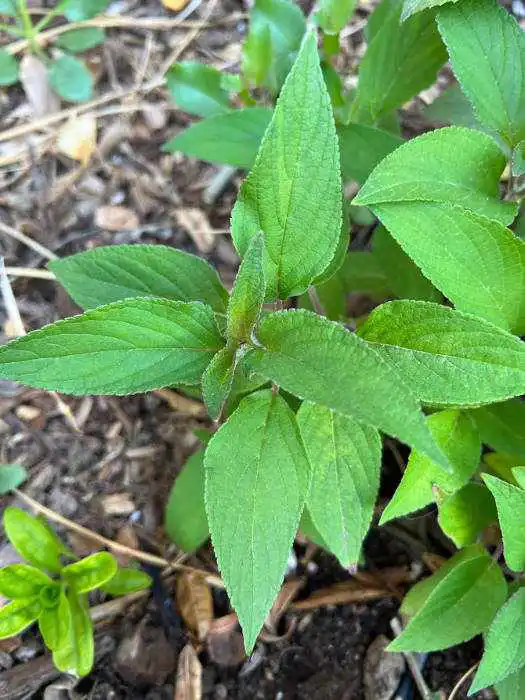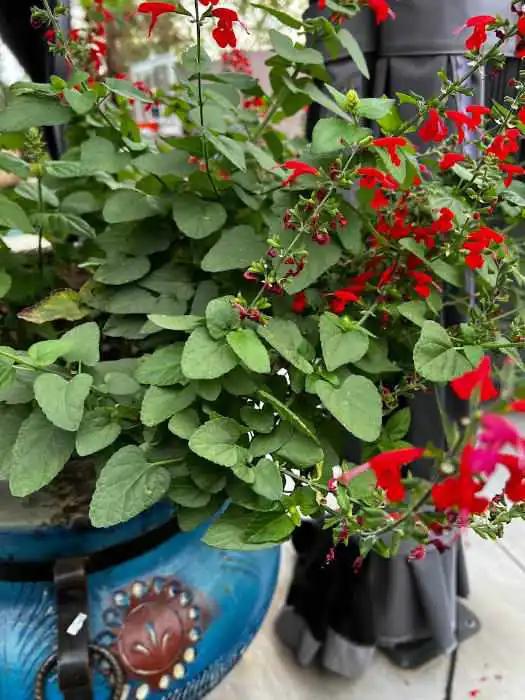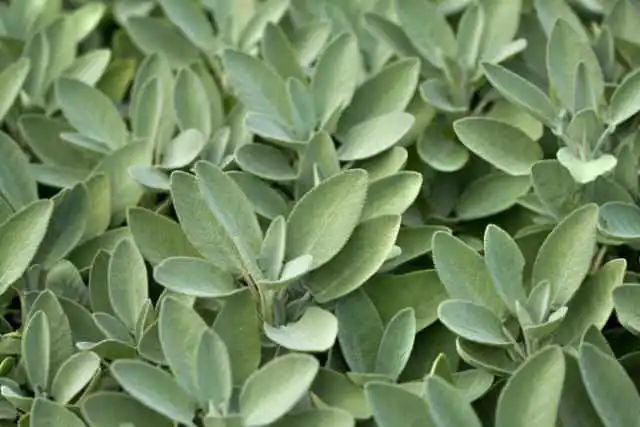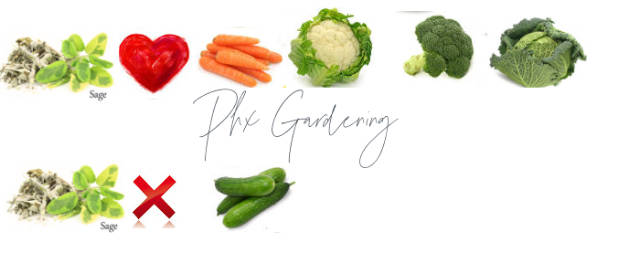There are hundreds of varieties of sage, however the majority are considered ornamental plants. A handful of the sages are culinary sages or edible.
Sage is part of the mint or Lamiaceae plant family. As a bonus sage has pretty flowers that attract bees and hummingbirds.
This post may contain affiliate links. Please read our disclosure policies.
Culinary Sages to Grow in Phoenix
- Salvia officinalis or Culinary Sage zone 5-10
- Salvia fruiticos or Greek sage zone 8-11
- Salvia melissordore grape scented sage zones 8-11
- Salvia elegam also called Pineapple Sage– zones 8-10
- Salvia apiana more commonly known as white sage zone 8-10
- Salvia lanceolata zone 9-11
Culinary Sage – Salvia officinalis
The sage you most likely think of when it comes to cooking. Salvia officinalis sage has green silvery leaves with a fuzzy texture.
In Phoenix, gardening zone 9b, our culinary sage grows year round. It receives morning sun and we cover it during periods of frost. In April, pretty purple flowers start blooming.
Grape Scented Sage – Salvia melissordore
Grape scented sage, Salvia melissordore, is an ornamental shrub. The leaves are often used in teas and the pretty edible blue flowers taste like grape bubblegum.
Pineapple Sage – Salvia elegam
Ornamental sage that is also used for culinary purposes. This woody herb has red tubular flowers that attract hummingbirds. They like moist soil and when dry the leaves will curl up.
We have pineapple sage growing in a pot as well as in the ground. It receives morning sun and filtered shade in zone 9b. We cover it during periods of frost and it has continued to grow and bloom year round.
Phoenix Gardening Steps: Grow Sage
- When and how to plant Sage
- What grows well near Sage and what doesn’t?
- How to care for Sage
- Harvesting Sage- When is the ideal time to pick Sage?
When to Plant and How to Grow Sage In Phoenix, Gardening Zone 9b
Sage is a perennial herb. It can be propagated with a cutting. Plant seeds in the fall or spring in Phoenix. Transplant seedlings to your Phoenix garden in February, March, April, October, or November. Seeds take about three weeks to germinate. If starting seeds indoors, the ideal time to transplant seedlings is when they are about six inches tall.
Allow up space for your sage to grow up to two feet in height.
Companion Plants for Sage
Sage can be planted near just about everything with the exception of cucumbers. It is particularly beneficial to plant sage near rosemary, broccoli, cauliflower, cabbage, and carrots.
Sage repels the white cabbage moth and carrot fly.
How to Care for Sage
Light Requirements: Sage prefers full sun or 6-8 hours of sun per day.
Soil Requirements: Prefers sandy loam well-drained soil, however sage can grow in soil less than ideal as long as it has good drainage. Like most herbs Sage likes neutral and slightly acidic pH. The soil pH range of 6-7 is ideal.
Water Requirements: Once establish Sage is pretty drought tolerant. Allow soil to dry before watering thoroughly.
When to Harvest Sage
Sage takes 75 days from seed to harvest. Harvest Sage before it starts to flower in the summer.

